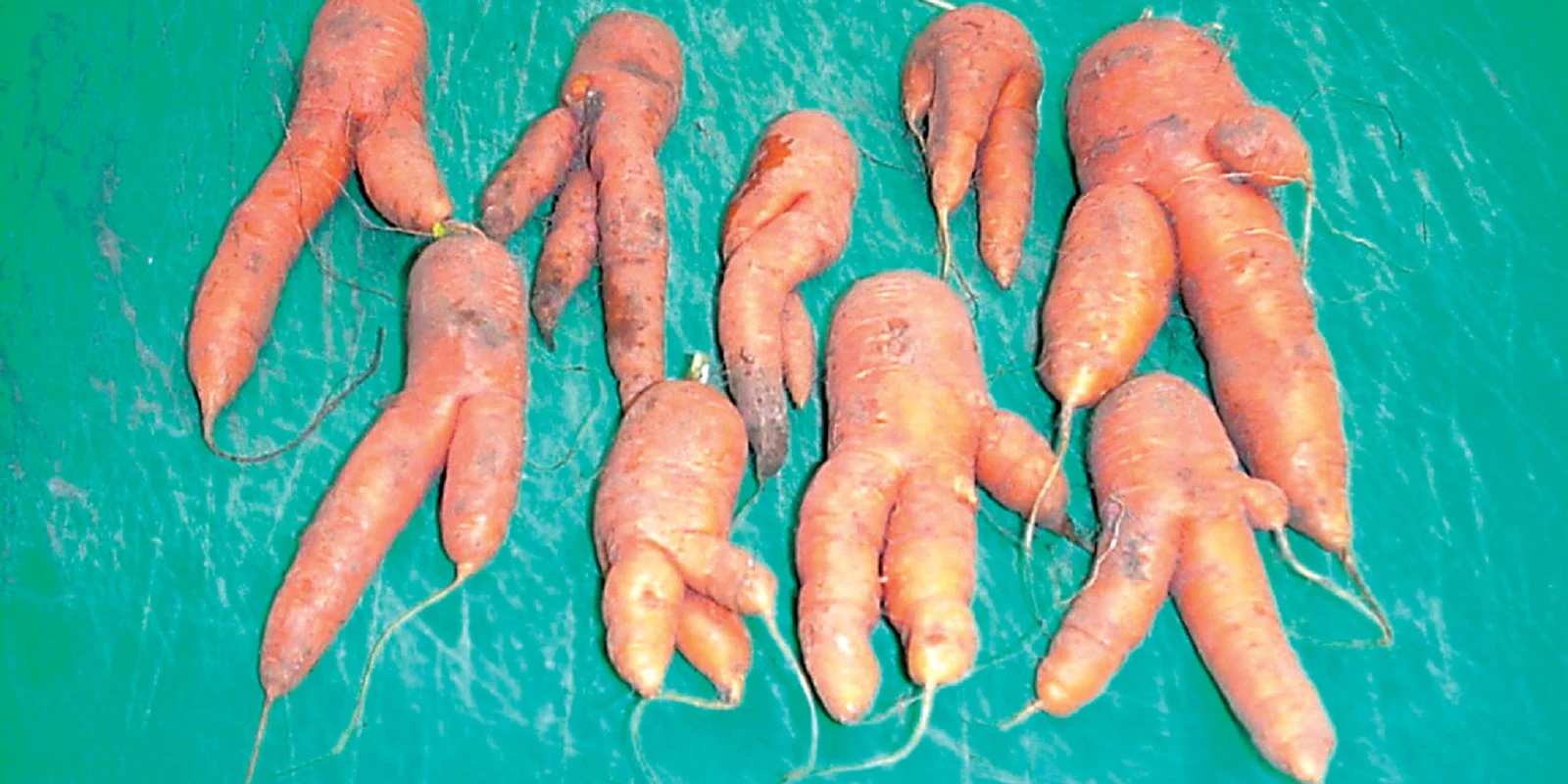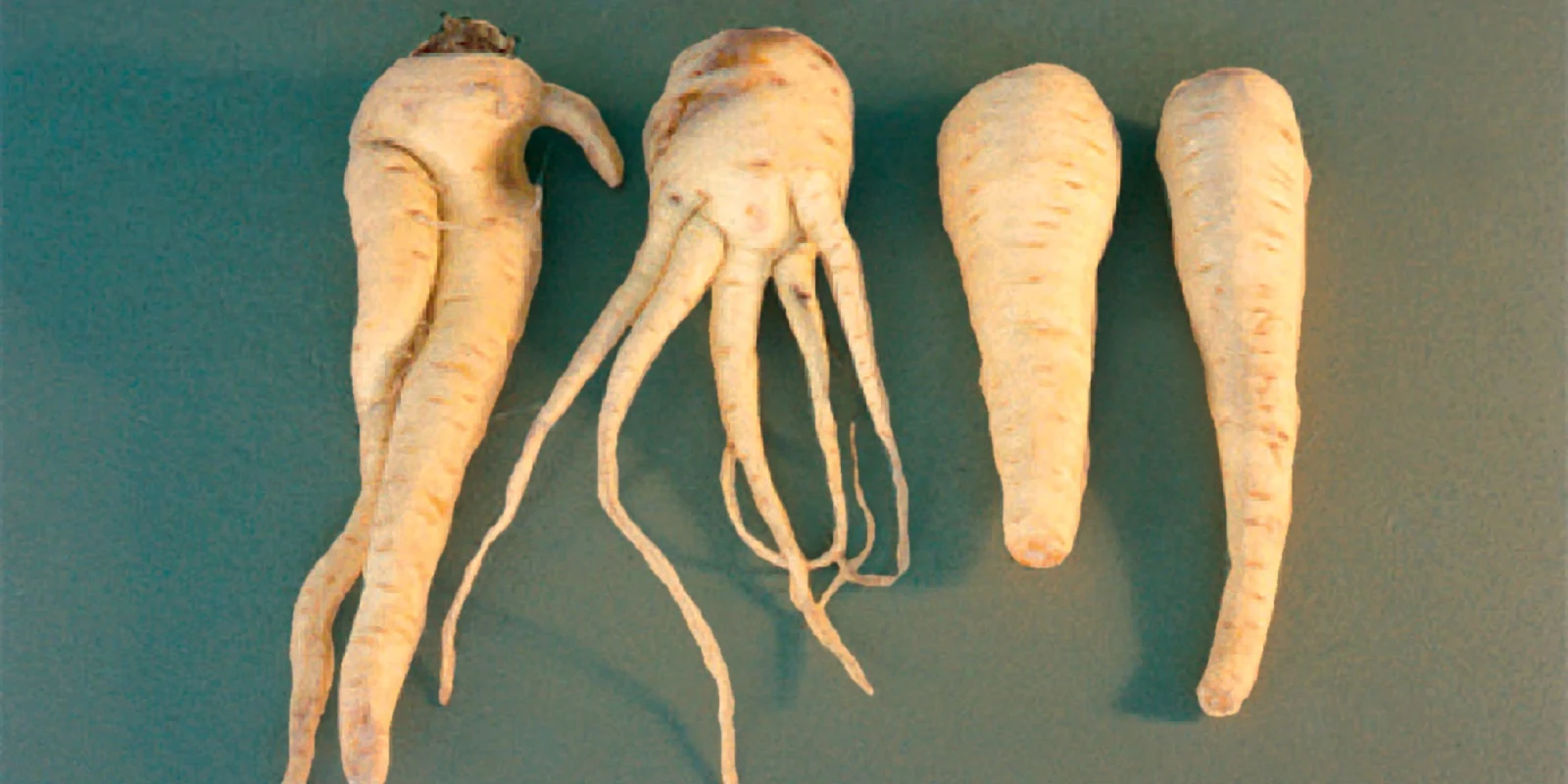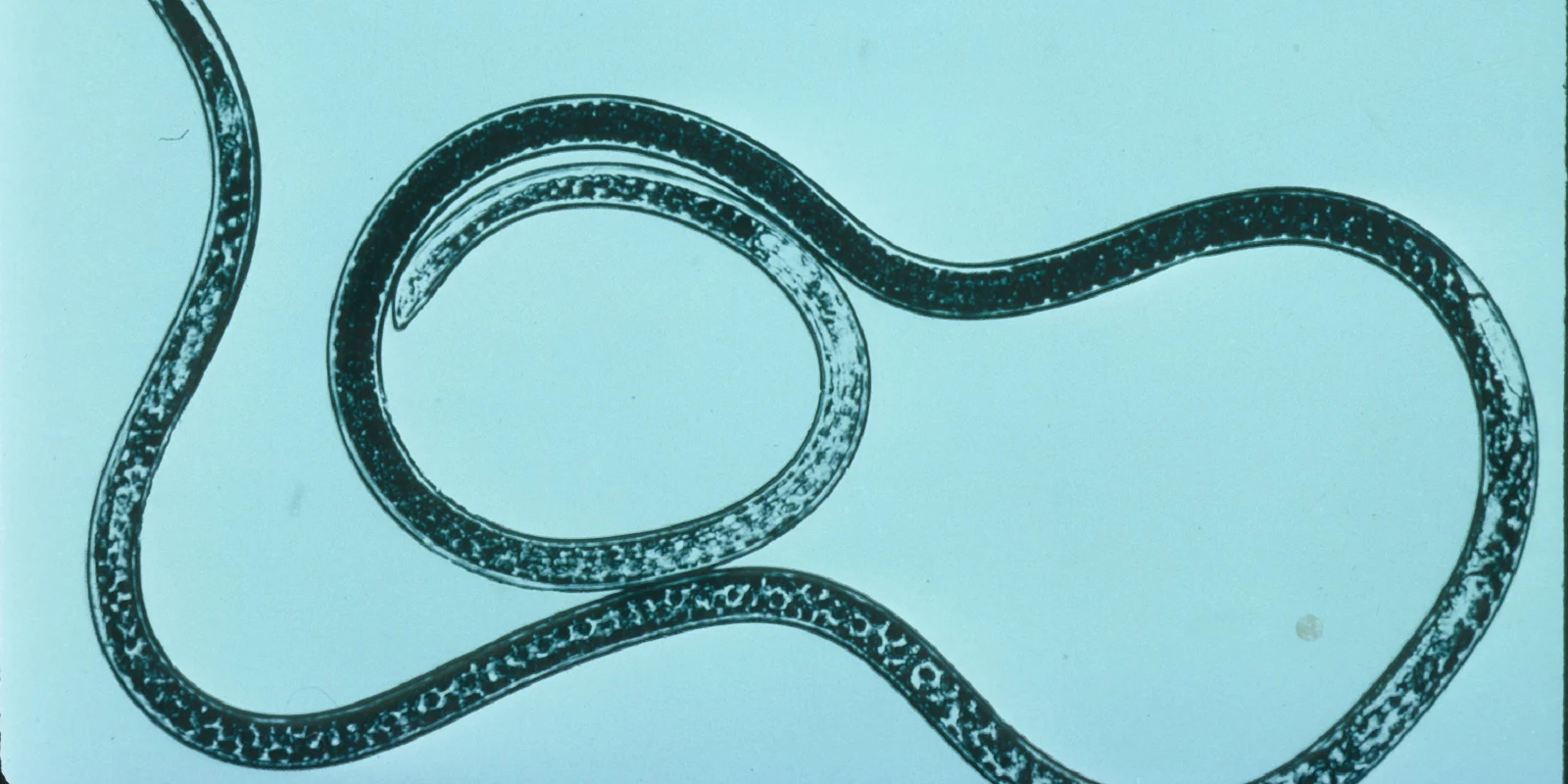
Fanging
Longidorus spp., Trichodorus spp. and Pratylenchus spp.
Identification
Nematodes are unsegmented worms that can be found in all soils but are particularly numerous in light sandy soils. Needle nematodes are one of the larger species and adults are between 5-10 mm in length (hence Longidorus), and can be seen with the naked eye. They are free-living nematodes which can cause damage to crops by both direct feeding on roots and the transmission of plant viruses.
Other free-living nematodes known to cause fanging in carrots and parsnips include root-lesion nematodes (Pratylenchus spp.) and stubby-root nematodes (Trichodorus spp.).
Symptoms
The nematodes feed on the growing tip of the carrot root, by injecting enzymes into the plant cells and then extracting the contents using their piercing mouthparts (stylets). This leads to localised cell death and loss of the growing point. The plant responds by developing new growing points which results in the condition known as ‘fanging’. Carrots and parsnips are both highly susceptible to this feeding damage.
This condition can also be caused where the growing tip is physically damaged by growing in soil with a high stone content, in fields with too high a nutrient content or which have recently been heavily manured.
Life-cycle
Adults can live for several years and there is one generation per year. Eggs are laid alongside host plants in the periods of rapid plant growth. The newly hatched nematodes feed directly on the root tips.
Other crops which are suitable hosts include sugar beet, celery, lettuce, cereals and soft fruit crops.
Importance
Early attacks can lead to plant loss but root fanging causes more significant economic damage by reducing crop quality. This can be severe in crops grown for the pre-packing and other quality markets.
Needle nematodes can also affect onions by feeding on the plant roots which can severely restrict root growth.
Threshold
Risk assessment
Soil samples can be analysed to identify the species of nematodes present and the number per litre of soil. ADAS use a guide figure of 50 nematodes per litre of soil. These results can help growers select fields with low nematode counts or alternatively decide on the need for nematicide treatment at planting.

Carrot fanging caused by nematodes.

Parsnip fanging caused by nematodes.

Nematode, Longidorus spp., female ©Broom's Barn Research Centre.


